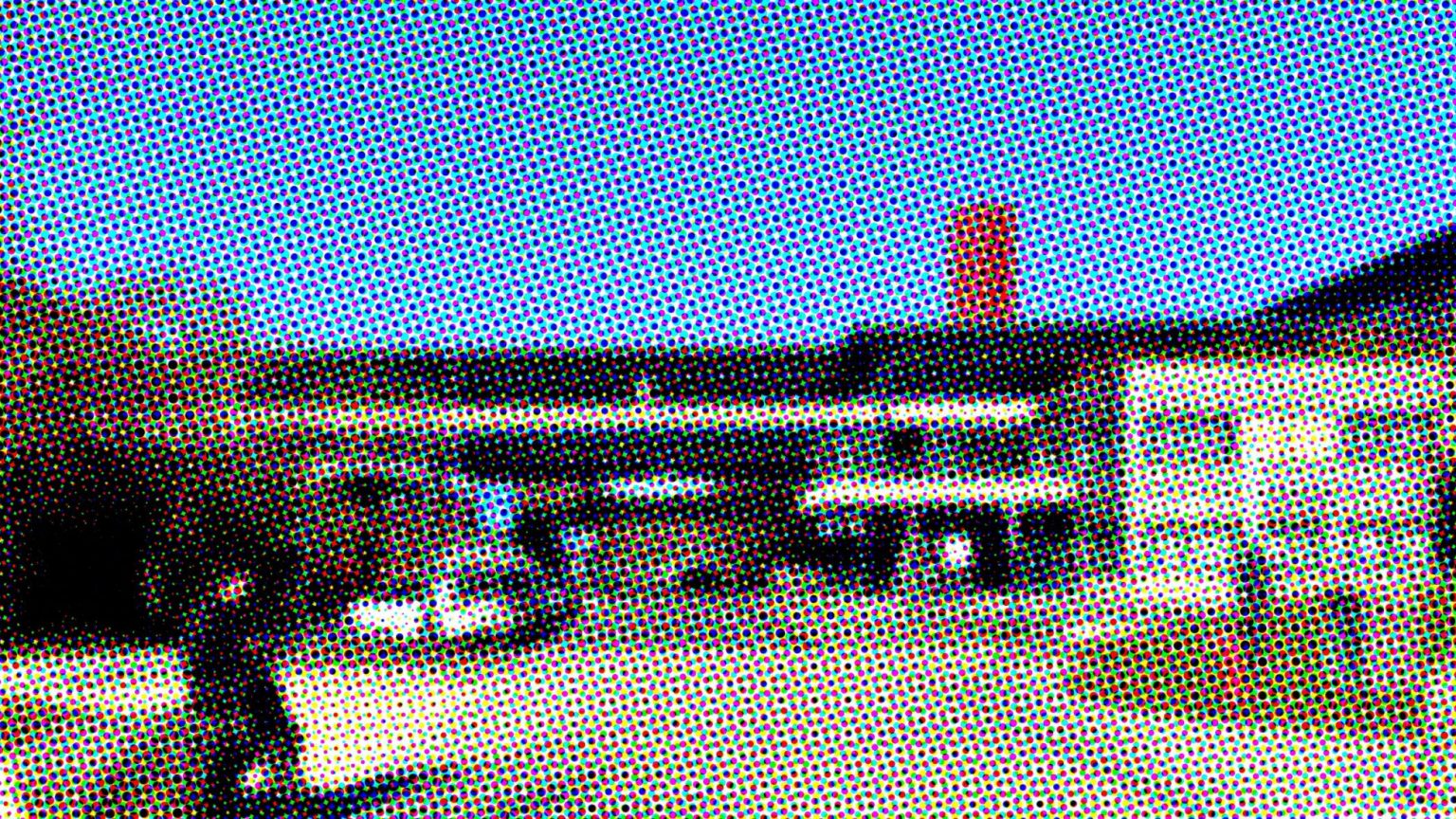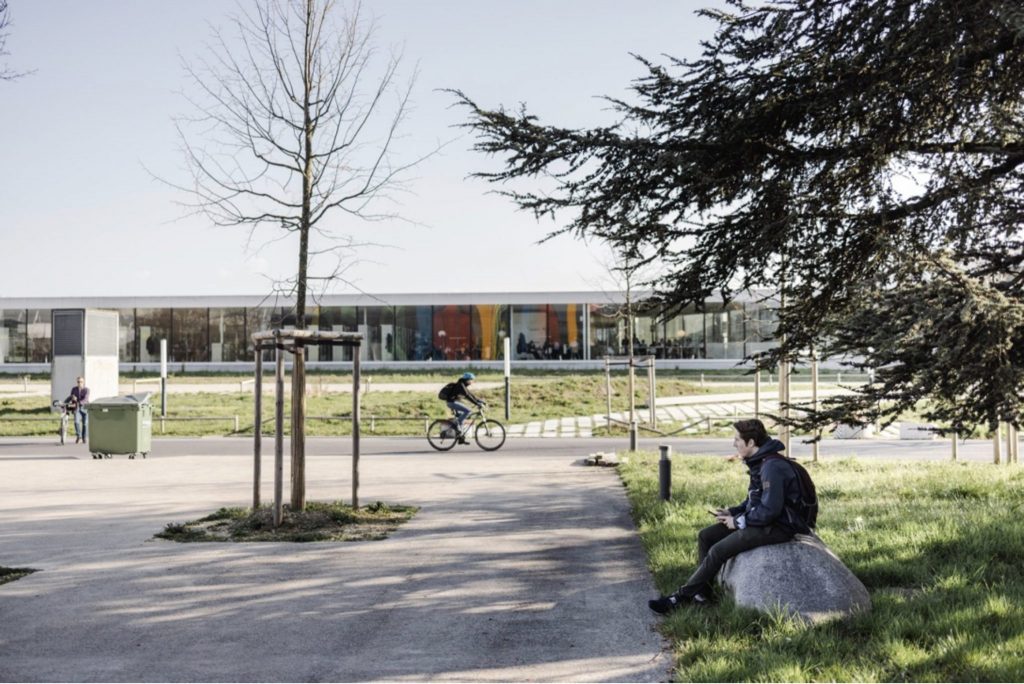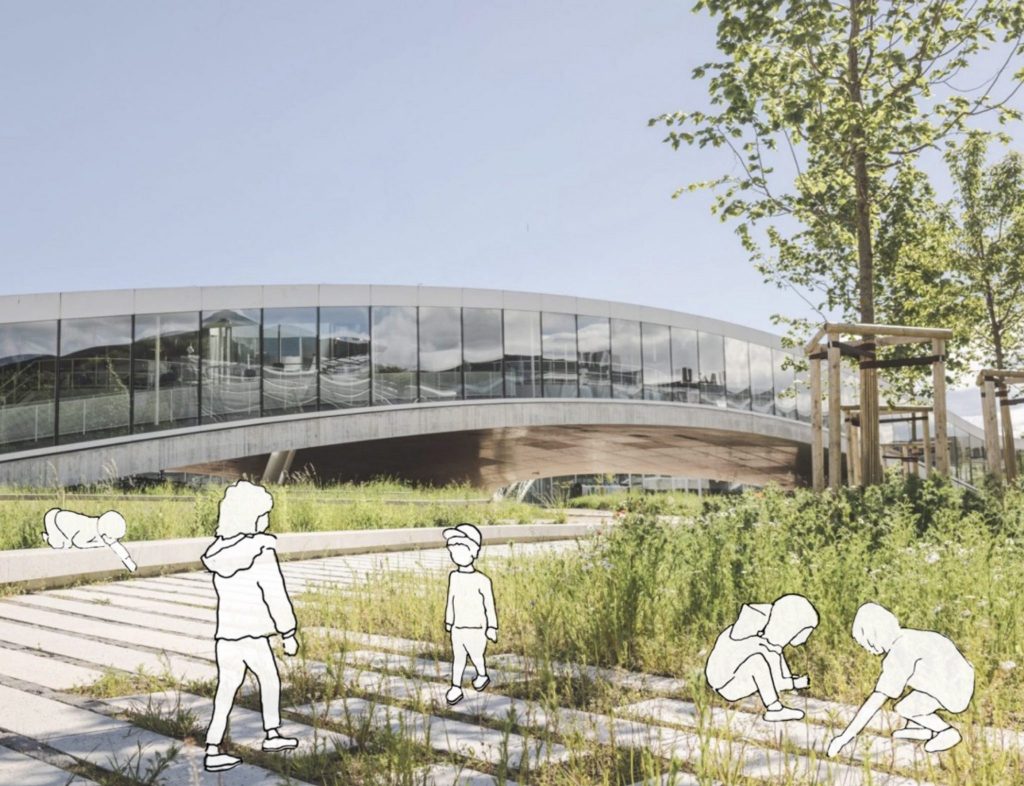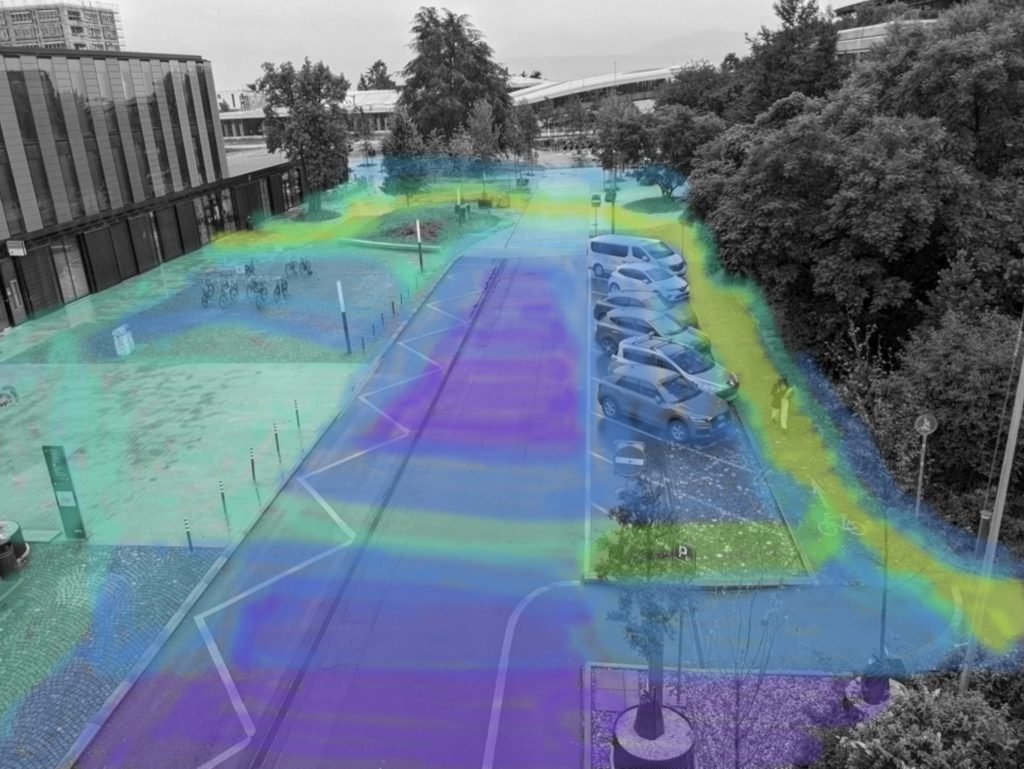EPFL CAMPUS LIVING LAB

Source: Avenue Piccard, EPFL © Anna Karla Almeida (2022)
Launched at the beginning of the spring semester of 2022 by the Vice Presidency for responsible Transformation (VPT), the Campus piéton initiative proposes to interrogate a turning point toward a more sustainable campus, starting by questioning the configuration and coherency of its open spaces. Following the master plan for the EPFL-UNIL sites, such an exploratory project aims to draw up preliminary perspectives on a first perimeter including the Avenue Piccard and the Route des Noyerettes. While a participative and design study mission is being co-animated together with the two ENAC laboratories Atelier de la Conception de l’Espace (Alice) and the Laboratory of Urbanism (Lab-U), the Habitat Research Center (HRC) is also involved in the coordination of the Campus Living Lab.
Selected proposals HRC Living Lab Grants 2022
Alice Gauthey, with Charlotte Grossiord and Dolaana Khovalyg — Plant Ecology Research Laboratory (PERL) and Laboratory of Integrated Comfort Engineering (ICE)
With climate change, the intensity of extreme events such as heat waves are predicted to increase. Heat represents one of the main challenges that we will have to face in the 21st century. This is particularly true in environments that are already prone to warm up quickly, such as cities. The built environment can re-emit the sun’s heat more than vegetated areas, thus creating the Urban Heat Island (UHI) effect. One major effect of UHI is the increase of human discomfort. Nature-based mitigation strategies were proposed globally, such as expanding greenspaces and urban tree planting. Trees can contribute to reducing the UHI effect through evapotranspiration or shading. Evapotranspiration is the process of transforming water into vapor by absorbing heat and releasing this water vapor in the environment. This process is species-dependent and can only be achieved under well-water conditions. Green areas can considerably decrease thermal discomfort, but drought can reduce this advantage by limiting the access to water supply necessary for transpiration. While urban re-greening seems to be an applicable alternative to mitigate the UHI effect, plant community structure can have strong effects on the magnitude of cooling. Modeling different scenarios incorporating a multitude of vegetation structures is thus necessary to offer the best vegetal structure suited to a particular build area.
In this study, we proposed to create and develop such a model, based on in-situ tree physiological and microclimatic measurements. The goal is to offer the best scenario to improve urban cooling, suited to the EPFL campus.

Photo: Niels Ackerman (VPT-EPFL)
Eric Duong, with Stefana Parascho — Lab for Creative Computation (CRCL)
“Motion Pictures” proposes the development of an interactive installation that investigates how light projections can transform liminal spaces into more efficient and socially engaging experiences. As pedestrian public spaces regain their importance in public life, overcoming the pandemic crisis has brought forth a moment of opportunity to reflect on how public spaces can become more adaptable and reactive to the needs of pedestrians. Computation and digital media allow for dynamic visualisations that can follow occupants and inform them of efficient paths, while automatically adjusting to obstacles. We are proposing an installation set up on covered pedestrian areas on campus, that consists of projectors, coupled with cameras and mini-computers that runs autonomously and can be adjusted to the local spatial configurations. Through the camera, each occupant’s movement will be tracked, anonymized and used to compute a custom animated visualization, highlighting and encouraging interactions between pedestrians. We aim to explore different types of visualisations, from direct translations of pedestrian’s current movements to shapes that result from the unexpected interaction of multiple people and movement recommendations based on learning algorithms. As such, the installation can provide a continuously changing and adapting experience that is building up on the pedestrians’ experience. As human interaction has gained a new meaning after the COVID-19 crisis, we believe that we can ask more of public spaces than just functionality and efficiency. We can engage pedestrians in a new way that allows them to challenge the role of transitionary spaces that connect the many campus buildings.

Photo: Eric Duong
Sonia Curnier, with Vincent Kaufmann — Urban Sociology Laboratory (LaSUR)
The EPFL campus has developed into a mixed and lively urban environment over the past two decades. Consequently, thinking about the EPFL community cannot be reduced to considering only students, professors and researchers, as often tends to happen. If EPFL outdoor spaces are to be genuine public spaces (diverse and inclusive) it is necessary to appreciate the plurality of their users, the diversity of their needs and aspirations. Aligned with the ambition of the Vice Presidency for Responsible Transformation to create a “collective vision” for the transformation of EPFL into a Campus Piéton. This research project is an opportunity to reflect specifically on the place given to (preschool) children on a university campus. With the increasing construction of EPFL/Unil’s care facilities, children represent a growing part of the campus’ users. They should therefore be considered in its transformation process, on equal terms as grown-ups. Incorporating their perspective into the design of the Campus Piéton means envisioning outdoor spaces as spaces to be explored with their peers and their caregivers, as opportunities to acquire spatial competencies, develop motor and sensory skills and enjoy regular contact with nature, culture and the adult world. From a broader research perspective, this case study will allow to explore age-appropriate tools and methods for incorporating the perspectives of preschoolers into a public space redesign process. It will also provide an opportunity to think about the place of children on campuses, if these are to be considered true urban and public environments.

Photo: Niels Ackerman (VPT-EPFL) – edited
Ankita Singhvi and Kaz Sakamoto, with Claudia R. Binder and Aristide Athanassiadis — Laboratory on Human-Environment Relations in Urban Systems (HERUS)
Avenue Piccard currently serves as a major thoroughfare. Despite large numbers of people passing through it daily, it fails to foster social activities such as slow walking, long conversations, and engaging with the surroundings. In short, it is an underutilized public space. Based on urban sustainability theory, we hypothesize that green infrastructure can play an important role in the transformation of ‘social life’ at Avenue Piccard, contributing to the regeneration of underutilized spaces. Temporary green infrastructure is modular, multifunctional, and adaptable: it therefore aligns with the values of circular urbanism. Our research aims to build on theory from urban sociology, circular economy, and machine learning. We will experiment with temporary green infrastructure to understand its role in activating social life in public spaces. Pragmatically, our research will use object-tracking technologies to gather data on the usage of public spaces, and measure the intensity of social activities (e.g. sitting, walking, talking). We will then place temporary green interventions (small plants, nature-based sitting places) to see how it impacts how and where people move. We will combine data on social activities with environmental data, such as hourly weather, light intensity, and ground moisture to get a holistic view of the effects of our green interventions. Our experiment builds on the HERUS lab’s research into urban sustainability. With our initiative, we want to contribute to the quality of our shared campus and promote stewardship of campus public spaces through the use of modular, multifunctional, and adaptable green interventions.

Photo: Ankita Singhvi and Kaz Sakamoto
Campus in Transition
With more than 17’000 users and inhabitants, the EPFL Lausanne site constitutes a main urban piece of the West-Lausanne agglomeration, if not the equivalent of a city itself, containing and sharing both local and global issues of urban growth. In the next 10 years, projections announce an increase of more than a quarter of its current community, requiring new infrastructures, hospitalities, mobility strategies, and facilities. These upcoming developments come at a crucial time when both the physical nature of the campus as well as its main guiding principles are getting old, if not outdated. Beyond the need for renovation and concrete spatial adaptations, EPFL urban infrastructures are at a notable turning point that requires profound renewals in terms of visions and logic of development, social and spatial practices, landscape amenities, and general inclusion.
Interdisciplinary platform
The Campus Living Lab consists on an interdisciplinary platform involving the EPFL scientific community in the futur development of the campus. With a focus on the outdoor spaces on the EPFL Lausanne campus, it intends to redefine their potential role and qualities. The living laboratory provides EPFL laboratories with a privileged research framework including a network of involved stakeholders, facilitated interactions with the user community, fruitful interactions with parallel research, and possibilities of concrete application. It welcomes ongoing and future research projects conducted at EPFL. Beyond isolated and punctual experimentations, the Campus Living Lab as a whole aspires to influence progressively and durably the morphology of the campus and its future developments. Among others, research on climate change adaptation, water management, heat islands, material reuse, soil strategies, or biodiversity enhancement are particularly welcome, from thematic expertise to the testing application of new knowledge, processes and devices.
Stakeholders
Laboratories involved
Contact
The HRC research team is available to accompany projects proposals and answer any questions.